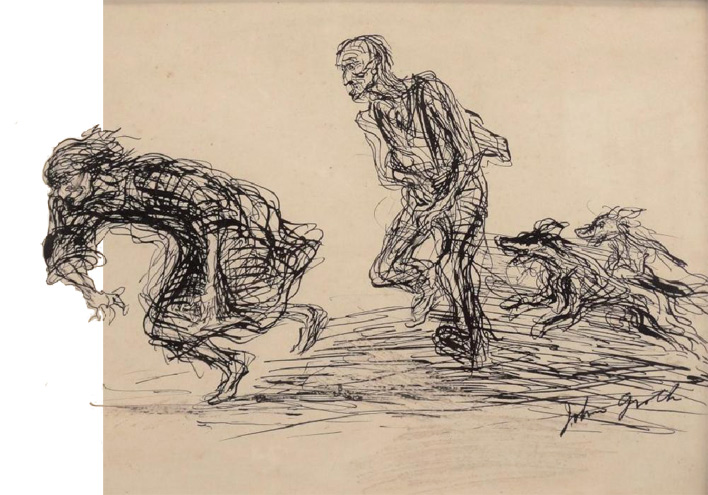
Illustrator John Groth was a war correspondent in WWII where he hung out with his friend, Ernest Hemingway. (Prior to the war, Groth had illustrated a number of Hemingway’s columns in Esquire magazine.) Groth used a technique called speed line, in which he sketched his subjects using rough, unperfected lines and then filled in between the lines with watercolors.
In September, 1944, Hemingway convinced Groth and a handful of other buddies to gather a pile of weapons and follow him out to “help” the U.S. Army (although it was a violation of the Geneva Convention for war correspondents to carry weapons.) Hemingway referred to the gang as his “irregulars.”
When they entered an abandoned farmhouse at Schloss Hemingstein near Bleiauf, Hemingway rolled several live grenades toward Groth and told him to “drop them from the second-floor window if a German patrol came through the garden.” 1
The following year, when Groth published his war book, Studio: Europe, Hemingway wrote in the introduction,
“None of us understood the sort of shorthand he sketched in. The men would look at the sketches and see just a lot of lines. It was a great pleasure to find what fine drawings they were when we got to see them.”
1 Hemingway: A Biography, by Jeffrey Meyers. p. 409